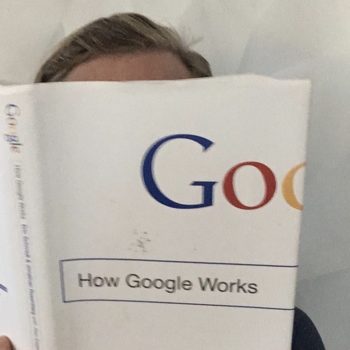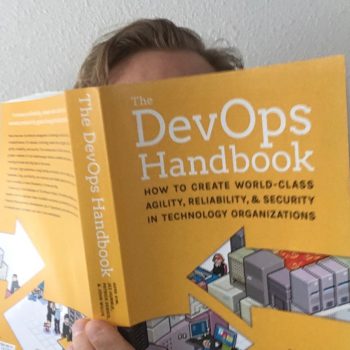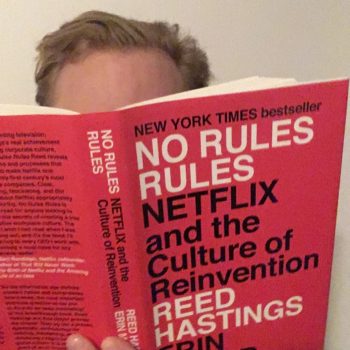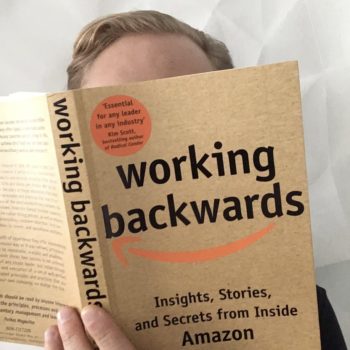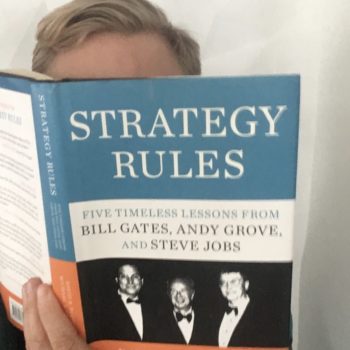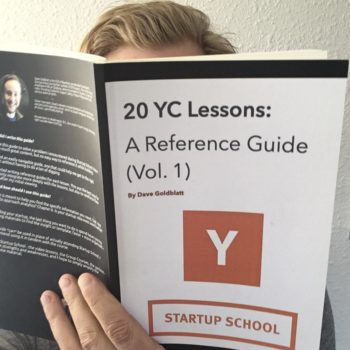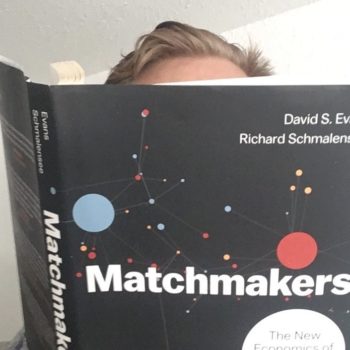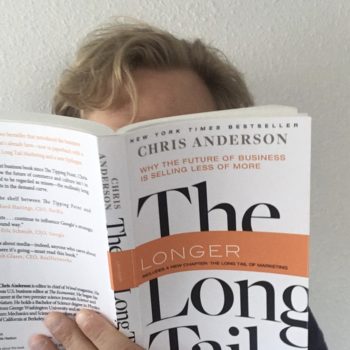How strongly do I recommend How Google Works?
9 / 10
Review of How Google Works
I was surprised at how much I enjoyed How Google Works. This book reads a lot like Strategy Rules, full of practical advice about both product strategy and people management.
How Google Works would be a good book club read for your company’s leadership team.
Top Ideas in This Book
- Hire smart creatives and learning animals: engineers with deep technical expertise and broad knowledge outside engineering
- Managers should have a minimum of seven reports to avoid bureaucracy and micromanagement
- Organize your company around the people having the biggest impact
- The best way to find the smart people in a company is to find one smart person and ask them
- The best products are rooted in a unique technical insight
- Optimize for scale and growth, not for revenue
- Focus on building platforms that bring together users in multi-sided market
- To innovate, ask what could be true in five years and work backward
- Catch at least one big wave in your career
Hire smart creatives and learning animals: engineers with deep technical expertise and broad knowledge outside engineering
We all know a smart creative, a person who knows a lot of things about a lot of things. And they create.
That’s an interesting word: create. When discussing creativity, we usually think about ideation and invention, forgetting the important act of creation.
Here’s a good filter for knowing whether you’re dealing with a smart creative: ask yourself if they could be running the company in ten years. If so, you’re on the right track.
But you need to know a few things about smart creatives:
- Smart creatives are often unusual and may be off-putting
- They might come off as divas and arrogant
- They’re hard to manage because fundamentally they don’t want to be managed
- To hire a smart creative takes guts because they’re probably smarter than you and that will feel like a threat. On that topic of hiring, the authors also recommend focusing on intelligence over specialization especially in high tech where technologies change frequently.
- Placing smart creatives in a cage is a recipe for everyone’s unhappiness. Don’t try telling a smart creative what to do. Try allowing them to do it. And then go further by challenging them to think bigger, for instance a 10X improvement over their best case scenario.
Managers should have a minimum of seven reports to avoid bureaucracy and micromanagement
Traditional management theory says you should have at most about 7-8 employees per manager.
Google has flipped this principle into a minimum of 7 staff per manager to keep the organization relatively flat and prevent managers from micromanaging.
Organize your company around the people having the biggest impact
Your most senior people are not necessarily your leaders or the people to organize around.
The highest performers producing the biggest impact are often working in mid-level or individual contributor roles and you should organize work around them.
The best way to find the smart people in a company is to find one smart person and ask them
As a leader joining a new company, you want to figure out who the smart people are so you can organize work around them and understand how organization operates.
To find the smart people, just find one smart person and ask them who else you should talk to.
The best products are rooted in a unique technical insight
Unique technical insights help you avoid me-too products based on incremental improvements and customer requests.
When you build a product based on a technical insight, not just copying a competitor and mildly improving on their implementation, you also create a product that’s difficult to replicate. Both technologically and culturally, your competitors will struggle to catch up.
Optimize for scale and growth, not for revenue
Initially I read this as “don’t worry about revenue” which contradicted advice I read in 20 YC Lessons saying you should focus on revenue. But upon further review, I think Google advice is “don’t optimize for revenue.”
The classic example is Google search focusing on the user experience and minimizing ad display when other search engines took every opportunity to show banner ads in order to maximize revenue.
Ultimately, the authors are suggesting that when it comes to technology products you need to focus on growth and long-term success, not short-term financial success.
Focus on building platforms that bring together users in multi-sided market
By platform or multi-sided market, the authors don’t necessarily mean marketplaces where traditional buyer-seller relationships play out.
YouTube is a platform for creators and consumers. Google search is a platform for advertisers and searchers.
The crux of a platform is multiple sides exchanging something of value. Platforms become more valuable as each side fills with users.
Ebay is more valuable with lots of buyers and sellers. So is Facebook with lots of users and advertisers. Social media examples provide a good opportunity for reflection on who the sides are and the underlying motivations of the company.
Platforms stand in contrast to traditional software products like Excel, which primarily benefit just the user and builder of the product.
To innovate, ask what could be true in five years and work backward
In the spirit of thinking bigger and skating to where the puck is going, ask yourself what could be true in five years. Then work backwards to figure out how things might get there.
The authors point out how this question is different from asking where things will be in five years. That’s a predictive question and asking it will limit your thinking, hurting your innovative side.
Catch at least one big wave in your career
Catching a big wave means working somewhere with rapid growth.
The best way to catch a wave is to go where there are lots of waves. In technology, that usually means San Francisco. In fashion it’s NYC. If fitness is your thing, look to Colorado.
